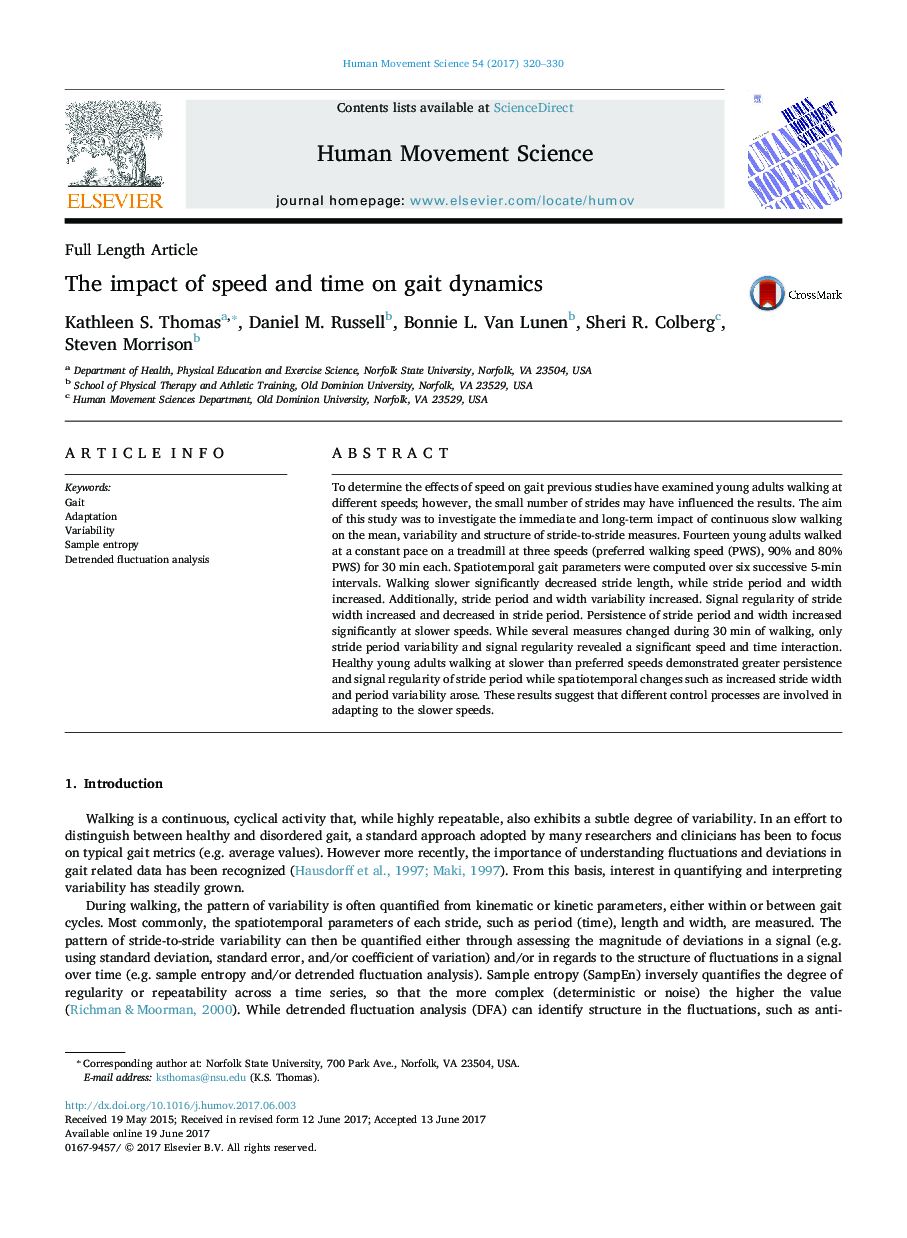| Article ID | Journal | Published Year | Pages | File Type |
|---|---|---|---|---|
| 5041991 | Human Movement Science | 2017 | 11 Pages |
â¢Walking 20% slower than preferred impacts the dynamics of gait.â¢Non-stationarity was observed over the 30 min trial reflecting gait adaptability.â¢Slower gait speeds increase stride width variability and over time, reduces stride period variability.
To determine the effects of speed on gait previous studies have examined young adults walking at different speeds; however, the small number of strides may have influenced the results. The aim of this study was to investigate the immediate and long-term impact of continuous slow walking on the mean, variability and structure of stride-to-stride measures. Fourteen young adults walked at a constant pace on a treadmill at three speeds (preferred walking speed (PWS), 90% and 80% PWS) for 30 min each. Spatiotemporal gait parameters were computed over six successive 5-min intervals. Walking slower significantly decreased stride length, while stride period and width increased. Additionally, stride period and width variability increased. Signal regularity of stride width increased and decreased in stride period. Persistence of stride period and width increased significantly at slower speeds. While several measures changed during 30Â min of walking, only stride period variability and signal regularity revealed a significant speed and time interaction. Healthy young adults walking at slower than preferred speeds demonstrated greater persistence and signal regularity of stride period while spatiotemporal changes such as increased stride width and period variability arose. These results suggest that different control processes are involved in adapting to the slower speeds.
